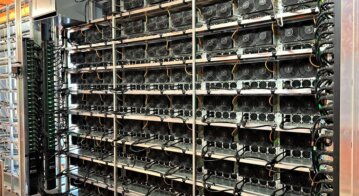Refurbished smartphones get buy-like-new boost

The planet would be happier if people bought used electronic devices rather than succumbing to the temptation of new products. But there’s an undeniable joy in buying something new. And device makers with supreme marketing teams know that. However, what if you could give a buy-like-new boost to purchasing refurbished smartphones and other electronics?
On TechHQ we’ve written about how R2V3 – the latest version of the sustainable electronic reuse and recycling standard – provides a ‘trust mark’ to firms looking to dispose of IT assets. But the wheels of the circular electronic economy are only going to pick up speed if more consumers are happy to shop for remanufactured and refurbished devices.
Making buying refurbished smartphones feel like new
And that’s where electronics marketplaces such as Back Market fit in, by making the purchasing of refurbished smartphones – to name the most popular category of used device – feel like buying new.
Device refurbishers and electronics re-manufacturers are doing a great job of breathing new life into products and components that are no longer needed by their original owners. And it’s worth reminding that the amount of resources saved by extending the life of products such as phones and laptops is huge.
A detailed 181-page report commissioned by ADEME, the French agency for ecological transition, lays out the environmental impact of choosing a refurbished device over a new equivalent – examining smartphones, tablets, laptops, and desktop computers. Using lifecycle analysis methods, researchers crunched the numbers on the environmental burden presented by different usage scenarios.
Putting devices back on the market still leaves a footprint – used products need to be transported for inspection and re-selling, and screens and batteries may need to be replaced – to give a few examples of where resources are still consumed. But the scale of the environmental impact is tiny relative to the energy and materials that are involved in manufacturing new products.
The ADEME report found that purchasing a refurbished smartphone and using it for 2 years, instead of purchasing a new smartphone and using it for 3 years, reduced the ecological load by 86% – examining the material input per unit of service (MIPS). Carbon dioxide emissions were 87% lower, and the benefits of extending device lifetimes add up across all environmental measures.
Latest from our most comprehensive refurbished report
->Refurbished smartphone sales grew 5% globally but China saw a 17% YoY decline.
->Apple captured 49% of the global refurbished smartphone market in 2022 followed by Samsung at 26%.https://t.co/xt5XaNjMVA pic.twitter.com/2CciP2rrri— Tarun Pathak (@Tarunpathak) April 24, 2023
What’s more, refurbished devices in excellent condition are indistinguishable from new products. The last hurdle to overcome in convincing shoppers to opt for used over new devices is the buying process. And for sales of refurbished smartphones and other electronic goods to boom, this has to compete with the experience of selecting and purchasing a new product.
Marketplaces for refurbished electronics such as Back Market, which brings together buyers and sellers globally, understand this and are rising to the challenge. Shoppers have 30 days to return purchased devices – for example, if they change their mind about an item. Devices are guaranteed for 12 months, and shoppers have the same payment options that they are used to when buying new.
“The obsession with buying new is going to diminish over time,” Katy Medlock, General Manager for Back Market in the UK, told TechHQ. “All of our markets are showing the enthusiasm for refurbishment.” Medlock points to the role that marketplaces have in educating consumers on not just the benefits of buying a used device, but emphasizing how the user experience (UX) has developed.
Back Market has 8 million customers worldwide and has recently launched a trade-in service that allows device owners to get an offer on phones, tablets, laptops, and gaming consoles from expert refurbishers. And having operations at scale, providing a badge of trust to buyers and sellers, is great news for the circular electronics economy.
Right to repair movement
At the same time, legislative wheels are turning and putting pressure on electronics firms to design products that are repairable and make it possible for customers to buy parts. “Having a reliable working device is no longer a nice to have; it’s a need,” Medlock adds.
Right to repair not only lowers the environmental burden of electronic goods, it makes devices more affordable and available to all. Education has moved online in a big way, and being without a laptop means missing out on lessons. Also, accessing services from banking to managing your energy supplier to booking travel and accommodation is moving to a digital-first model.
Refurbished smartphones, tablets, and other internet-enabled devices keep people connected without having to pay a premium for the latest shiny new thing. There are also supply chain considerations. Giving consumers and businesses other channels to purchase devices builds resilience.
And in some cases, it may be the only way to find parts. In the automotive sector, scrap dealers have embraced the digital age, and the so-called reverse manufacturing of cars and other vehicles is becoming an increasingly slick operation. Vehicles are barcoded as they arrive, booked onto a database, stripped, inspected – with parts photographed – and saleable items prepared for online bids, all within a few hours.
There’s money to be made in keeping useful items out of landfill, and when it’s profitable to do the right thing for the environment, the planet stands a fighting chance of being saved. Sectors such as aviation and fast fashion have come under scrutiny, and companies are realizing that they can no longer bank on sales without demonstrating how there are addressing the environmental impact of the products and services that they provide.
That ecological burden applies to electronics too, but when shopping for refurbished smartphones, laptops, and other products lights up the brain in the same way as buying new – thanks to UX-focused marketplaces – resources are saved for another day.







